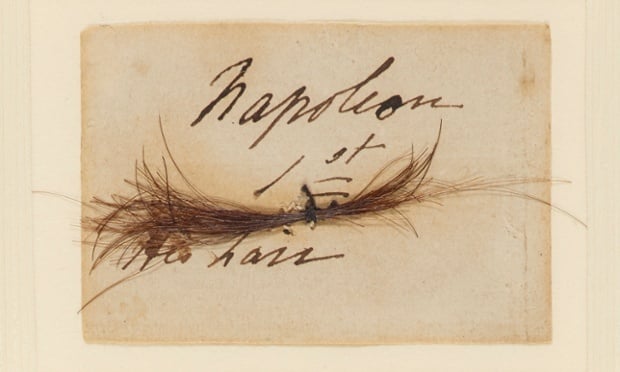Art & Exhibitions
Waterloo Bicentennial Exhibition Includes Lock of Napoleon’s Hair


Sarah Cascone

In commemoration of the bicentennial of the Battle of Waterloo, Windsor Castle is holding an exhibition of Napoleon Bonaparte artifacts that includes a lock of the emperor’s hair and his letter of surrender, addressed to George IV, then the prince regent.
In his letter, Napoleon calls the prince “the most powerful, the most constant, and the most generous of my enemies,” begging for protection and the “hospitality of the British people.”
Though the prince appreciated the elegantly composed letter, which compared the defeated Frenchman to the ancient Greek Themistocles, who was granted mercy by Persia’s Artaxerxes, Napoleon was ultimately exiled to St. Helena, where he died in 1821. The exhibition will also include a missive from the Duke of Wellington to the prince, praising his highness for his role in the decisive battle, though the prince never saw active combat.
“It is very exciting to be able to display both these letters as part of the Waterloo and Windsor exhibition,” exhibition curator Kate Heard, of the Royal Collection Trust, told the Guardian. “These vivid and important documents provide a fascinating insight into the minds of the duke and emperor almost directly after the battle of Waterloo.”
Hopefully, Windsor has upped security measures in advance of the show, which opens on January 31, with the letters, hair, and star of a Knight Grand Cross of the Order of the Légion d’Honneur worn in the battle by the French leader. In April of this year, burglars stole a number of Napoleon memorabilia, including a lock of the emperor’s hair displayed in a glass frame, and three coins that are believed to have been on his person at the time of his death, from Australia’s Briars Park homestead (see “Australian Burglars Make Off With Napoleon’s Hair and Snuff Box“).
It’s been a surprisingly busy year in Napoleon collectibles overall: the French leader’s marriage certificate to Josephine, the Viscomtesse de Beauharnais, which basically amounted to a pre-nup noting that the couple wouldn’t be responsible for each other’s debts, nor lay claim to each other’s property, smashed pre-sale estimates when it hit the auction block in September (see “Napoleon’s Wedding Certificate Fetches €437,500“).
In November alone, one Napoleon’s iconic “bicorne” hats sold for more than $2 million (see “Napoleon’s Hat Sells for $2.2 Million“), while an entire museum’s worth of Napoleon artifacts were sold by the now-defunct Napoleon Museum of Monaco (see “Monaco Selling Off Napoleon Museum Collection“).